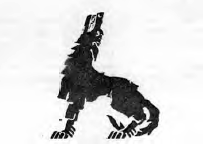Appendix A: Legend
About the year 1323 Gediminas the ruler of Lithuania, was out hunting one day accompanied by the nobility of his court. Many servants and beaters with large packs of hounds were in his train. Alarmed by the unusual movement, all animals of the forest, big and small, listened to the terrifying clamor that had invaded the peaceful calm of their domain, and in mortal fear, scurried into the thicket. Yet the hunters were clever and experienced, their noble horses were mettlesome, and their arrows never missed the aim. Many wild animals were killed. The most magnificent bison was bagged by the ruler himself. While pursuing this king of the Lithuanian forest, Gediminas happened to come to the top of a high mountain situated at an angle formed by the rivers Neris and Vilnelė. Delighted with the wonderful view that the mountain’s peak offered, Gediminas ordered the camp pitched at this spot. At once fires were kindled for cooking and furs spread out for the night’s rest. Tired by the exertions of the day, Gediminas soon was sound asleep and had a strange dream. It seemed to him he beheld an iron wolf standing on the top of this mountain uttering such piercing howls as though hundreds of wolves were simultaneously raising their voices. In the morning, Gediminas told his courtiers about this dream but they were unable to explain it. Then he sent for the High Priest (Kriviu Krivaitis) of the near-by sanctuary of Perkûnas the Thunderer who attentively listened to the King’s narration of the dream, then profoundly bowing and stroking his long white beard spoke as follows:
— Sire, the iron wolf signifies a large and mighty city, the howling means the clamor that will arise from it reaching far beyond the country’s borders and proclaiming through long centuries the glory of Lithuania.
Well pleased with the interpretation of his dream, Gediminas after his return to Kernavé, his residence, summoned many craftsmen ordering them to erect a strong castle on the top of that mountain. When the castle was completed, he shifted his residence there, by this move giving the signal for the construction of the new capital of his country.
This is as far as the legend goes about the foundation of Vilnius.

